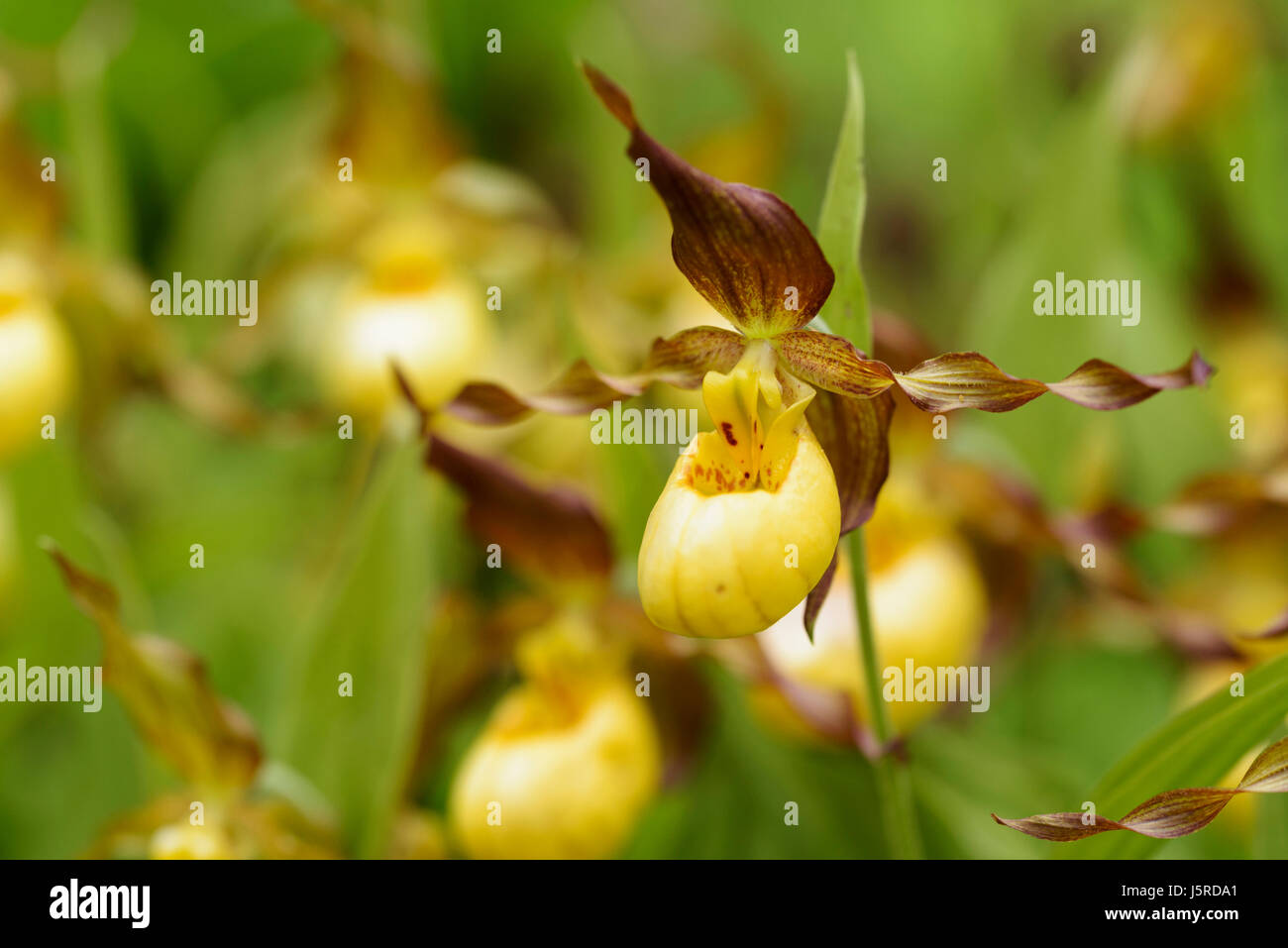Orchids are a beautiful, exotic flower that many people enjoy having in their homes. They are relatively easy to care for, but one question that is often asked is “How much light do orchids need?” The answer to this question depends on the type of orchid you have.
Some orchids require more light than others. If you are not sure how much light your orchid needs, it is best to ask a professional at your local nursery or gardening store.
Orchids are a beautiful and popular flower, but they can be tricky to care for. One of the most important things to keep in mind when caring for orchids is how much light they need.
While orchids prefer bright, indirect sunlight, they can also tolerate lower levels of light.
If you’re not sure how much light your orchid is getting, err on the side of too little rather than too much. Too much direct sunlight can scorch the leaves, while too little light will cause the flowers to fade.
In terms of water, orchids like to be kept moist but not wet.
Water them thoroughly about once a week and allow the potting mix to dry out somewhat between watering. Overwatering is one of the most common mistakes made with orchids, so it’s important to make sure you’re not doing it!
Finally, don’t forget that orchids need good air circulation around them.
Be sure to place them in an area where they’ll get plenty of fresh air.
With these tips in mind, you should be able to successfully care for your orchid and enjoy its beauty for many months to come!
How Much Par is Too Much
When it comes to playing golf, every course is different. And while there are general recommendations for how many strokes you should take per hole (aka your “par”), ultimately it’s up to you to decide what’s too much.
If you’re constantly coming in over par, it might be time to reassess your game.
Are you taking too long of a backswing? Are you missing the fairway? These are all things that can be addressed with practice and patience.
Of course, there will be times when even the best players come in over par. It happens to everyone! The important thing is not to get discouraged, and keep working on your game.
So how do you know if you’re taking too many strokes? Ultimately, it depends on your goals and objectives for playing golf. If you’re just out there to have fun and don’t care about your score, then take as many strokes as you need!
However, if you’re trying to lower your handicap or compete in tournaments, then obviously fewer strokes is better.
There is no magic number of strokes that determines whether or not you’re taking too many. It’s up to you to assess your own game and set realistic goals.
If you find yourself consistently coming in over par, talk to a professional about ways to improve your game. With practice and dedication, anyone can lower their score and shoot closer to par!
Orchid Light Requirements Chart
If you’re an orchid enthusiast, then you know that each variety of orchid has specific light requirements. Too much light and your orchid will sunburn. Too little light and it will become etiolated (stretchy and weak).
So what’s the perfect amount of light for your orchids?
The answer can be found in this Orchid Light Requirements Chart. This chart lists the minimum, maximum, and recommended amount of light for over 60 different types of orchids.
Simply find your variety of orchid on the chart and voila! You’ll know exactly how much light it needs to thrive.
So don’t let your Orchids sit in the dark any longer, get them the perfect amount of light with this Orchid Light Requirements Chart!
Mini Orchid Light Requirements
Orchids are one of the most popular houseplants, and for good reason! They are relatively easy to care for and can bloom for months at a time. One of the most important things to remember when caring for an orchid is that they have very specific light requirements.
Mini orchids, also known as phalaenopsis orchids, thrive in bright, indirect sunlight. If you live in a particularly sunny climate, you may need to provide some protection from the harsh afternoon sun. These plants do not do well in direct sunlight, as it can scorch their leaves.
If you don’t have a spot in your home that gets bright, indirect sunlight, you can supplement with artificial grow lights. Be sure to position the grow lights so that they are about 12 inches away from the plant’s leaves. Keep them on for about 14 hours per day.
With proper light, your mini orchid will bloom beautifully for months on end!
How Much Light Do Orchids Need in Winter
When it comes to light, orchids are a bit fussy. They like bright light, but not direct sunlight. This can be tricky to provide during the winter months when the days are shorter and the sun is lower in the sky.
If you live in an area with limited natural light, you may need to supplement with grow lights.
As a general rule of thumb, most orchids will do well with about 12 hours of light per day during the winter months. This can be provided by a combination of natural and artificial light sources.
If you’re using artificial lights, make sure they are placed close enough to the plants so that they receive adequate light without being burned by the bulbs.
It’s also important to remember that different types of orchids have different lighting requirements. For example, phalaenopsis orchids (also known as moth orchids) generally prefer lower levels of light than other types of orchids.
So if you’re growing multiple types of orchids, be sure to research their specific needs and adjust your lighting accordingly.
Full Spectrum Led Grow Lights for Orchids
Orchids are a beautiful, exotic plant that can be difficult to grow indoors. One of the most important things you can do to ensure success is to provide them with the right type of light.
Most people don’t realize that there are different types of LED lights available on the market.
While all LEDs emit light, not all LEDs are created equal when it comes to growing plants. You want to look for an LED grow light that emits full spectrum light.
Full spectrum light is closest to natural sunlight and will help your orchids thrive.
These lights are more expensive than traditional LEDs, but they’re worth the investment if you want healthy, beautiful plants.

Credit: www.alamy.com
Is My Orchid Getting Too Much Sun?
If you think your orchid is getting too much sun, there are a few things you can do. First, check the leaves for signs of scorching or bleaching. If they’re starting to turn brown or yellow, it’s probably time to give them some relief from the sun.
You can move them to a shadier spot, or if you’re growing them indoors, put them behind a sheer curtain.
Another way to tell if your orchid is getting too much sun is by looking at the flowers. If they’re wilting or fading in color, that’s another sign that they need some protection from the sun.
Again, moving them to a shadier location will help.
If you don’t want to move your orchids around, another option is to use an umbrella or other type of shading device to protect them from direct sunlight. Just be sure not to block all of the light – they still need some bright indirect light in order to thrive!
Do Orchids Grow Well under Led Lights?
Orchids are a type of flower that many people believe can only be grown in certain conditions. While it is true that they prefer humid and warm environments, there are actually several species of orchid that can thrive under LED lights. In fact, growing orchids under LED lights can have several benefits over traditional methods.
First, LED lights emit very little heat. This is important for orchids because too much heat can damage their delicate flowers. Second, LEDs use far less energy than traditional grow lights, which means you’ll save money on your electric bill.
Finally, LEDs can be tailored to emit specific wavelengths of light, which allows you to better control the growth of your orchids.
If you’re interested in growing orchids under LED lights, there are a few things you should keep in mind. First, make sure you purchase an LED grow light that emits full-spectrum light; this will ensure your orchids receive the right mix of light waves for optimal growth.
Second, be sure to place your grow light at the proper distance from your plants; too close and the leaves may burn, too far and the plants won’t receive enough light. Finally, remember that Orchids need 14-16 hours of darkness each day in order to bloom; during this time, turn off your grow light so your plants can rest.
With a little care and attention, you can successfully grow beautiful Orchids under LED lights!
How Much Sunlight Does a Orchid Need?
Orchids are a type of flower that is often associated with tropical locales. While they can grow in a variety of climates, they do need a fair amount of sunlight to thrive. The amount of sunlight an orchid needs will depend on the specific type of orchid, as well as the climate it is growing in.
In general, however, most orchids need at least four hours of direct sunlight each day to bloom properly.
If you are growing orchids indoors, you will need to provide them with artificial light sources that mimic the effects of natural sunlight. These can be special grow lights or even regular fluorescent bulbs.
Place your lights so that they are about six inches above the leaves of the plants and leave them on for at least 12 hours per day.
How Much Ppfd Do Orchids Need?
Orchids are a diverse and widespread family of flowering plants, with around 28,000 species in existence. They can be found on every continent except Antarctica, and in almost every type of habitat. Orchids have a reputation for being finicky and difficult to grow, but with the right care they can thrive indoors or out.
One of the most important factors in growing healthy orchids is providing them with the correct amount of light. The amount of light an orchid needs depends on the specific species; some require bright sunlight while others do better in lower-light conditions. In general, most orchids prefer moderate to bright indirect light.
It’s also important to know what kind of light you’re dealing with–or more specifically, the color temperature and intensity of that light. This is measured in PPFD (photosynthetic photon flux density), which tells you how many photons are hitting a given area per second. For orchids, an ideal PPFD level is between 500-1000 micromoles/m2/second.
If you’re unsure about the lighting conditions in your home or office, you can purchase a handheld PPFD meter to measure the levels yourself. Alternatively, many plant nurseries and garden centers now offer LED grow lights that emit the ideal spectrum of light for orchids (and other plants). These grow lights can be placed relatively close to your plants without causing any harm, making them a great option for those who want to ensure their orchids are getting enough light.
Is Proper Lighting Important for Orchids to Thrive in Pot Culture?
Proper lighting is crucial for orchids to thrive in pot culture. The space needed for orchids should receive adequate light, usually filtered or indirect sunlight to prevent burning their delicate leaves. Providing the right amount and intensity of light ensures healthy growth, vibrant blooms, and overall success in growing orchids in pots.
Light Requirements for Indoor Orchids: 4 Solutions for Artificial Light
Conclusion
Orchids are a beautiful and popular type of flower, but they can be finicky when it comes to care. One important factor in keeping your orchid healthy is providing the right amount of light. Most orchids need at least 12 hours of bright, indirect sunlight each day in order to bloom.
If you don’t have a spot in your home that gets that much light, you can supplement with artificial lighting. Be sure to check the labels on your bulbs to ensure they provide the right type and intensity of light for your orchid.






